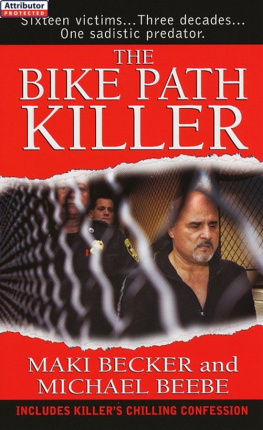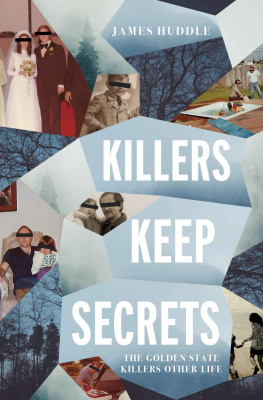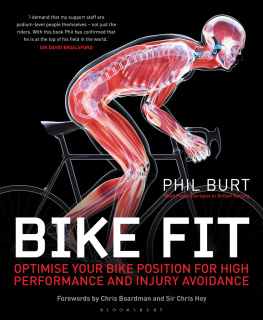BIKE PATH
RAPIST

Copyright 2009 Jeff Schober and Dennis Delano
ALL RIGHTS RESERVED. No part of this book may be reproduced or transmitted in any form by any means, electronic or mechanical, including photocopying and recording, or by any information storage and retrieval system, except as may be expressly permitted in writing from the publisher. Requests for permission should be addressed to The Globe Pequot Press, Attn: Rights and Permissions Department, P.O. Box 480, Guilford, CT 06437.
The Lyons Press is an imprint of The Globe Pequot Press.
Text designed by Libby Kingsbury
Library of Congress Cataloging-in-Publication Data
Schober, Jeff.
Bike path rapist : a cops firsthand account of catching the killer who terrorized a community / Jeff Schober and Dennis Delano.
p. cm.
ISBN 978-1-59921-606-5
1. Sex crimesInvestigationUnited States. 2. Serial murderers United States. I. Delano, Dennis. II. Title.
HV8079.S48.S36 2009
364.1532092dc22
2008046743
Printed in the United States of America
10 9 8 7 6 5 4 3 2 1
Foreword
W hen I was asked to work on the multi-agency investigative team now known as the Bike Path Rapist Task Force, I could never have imagined the events that would transpire in the years ahead. On the first day, the higher-ups told us that we were not to use the words task force in our dealings with the media, because it had undesirable political connotations and might lead people to think a metro police force could be tried out in the area. It was decided that a team of investigators would be staffed from four separate local police jurisdictions including the Erie County Sheriffs Office, the New York State Police, the Town of Amherst police department, and the City of Buffalo police department. Along the way, more personnel from these four agencies were added as different investigative talents and skills became needed. When all was said and done, the task force had consisted of between five and twelve investigators at various times. Most people considered the task force a huge success, especially after the dust had settled and we had put the cuffs on the man Sheriff Tim Howard later called the monster known as the Bike Path Rapist. The investigation led to the arrest, conviction, and sentencing on three separate counts of murder of Altemio Sanchez, who was living what appeared to be a normal life as an average family man, factory worker, husband, and father of two in the Buffalo suburb of Cheektowaga, New York.
Ironically, the Cheektowaga police department, although they assisted us at various times during the investigation, had not been a part of the task force, because none of the crimes that we were commissioned to investigate had been committed within their jurisdiction. During the course of the investigation, I had done some research on what is called geographical profiling, and was amazed at how accurately it could pinpoint the most likely areas where a serial criminal might reside, work, and commit crimes. As the saying goes, if given an option, an animal usually will not soil his own cage. I later found out that it is uncommon for serial killers and rapists to commit crimes in their hometowns.
The investigation culminated with an arrest that should have been the pinnacle of my career in law enforcement, but was partly overshadowed by a struggle between cops trying to do the right thing and an out of control district attorney trying to protect his turf.
I cannot begin to imagine the pain and suffering that this monster has caused countless victims and family members during his reign of terror, nor will I ever forget the emotional women as they wept while trying to discuss the crimes. I also wont forget the feeling of helplessness we had because we would never be able to charge him with the twenty-six rapes of mostly teenaged girls that we believe he had committed, because the statute of limitations had expired.
Along the way, through this twisted and jumbled investigation, we stumbled upon the heartbreaking realization that a young diagnosed schizophrenic named Anthony Capozzi had been wrongfully arrested and convicted for two rapes he could not have committed and had served twenty-two years out of a thirty-fiveyear sentence. These crimes were later proven by DNA to be the work of none other than the Bike Path Rapist. As if this wasnt strange enough, the Erie County district attorney and his staff were adamant that they were not going to pursue the information that we had uncovered about Capozzi unless we could give them hard physical evidence that he did not commit the rapes in question. The first question that popped into my head was Why? Why do we need hard physical evidence that Anthony did not commit the rapes in order to get him released from prison, when there was absolutely no physical evidence, hard or otherwise, linking him to any crime scene anywhere back in 1985 when he was arrested, tried, and convicted?
My heart goes out to the Capozzi family for their never-ending support for Anthony, and the tight bond that they have maintained throughout this unconscionable ordeal. They have held their heads high, knowing that some day the truth would surface. I am both humbled by their humanity and compassion for others, and grateful to God for being given the opportunity and ability to be involved in helping such a wonderful family to finally attain justice for their son and brother.
I have often said since then that this investigation could not have been resolved successfully, especially in such a short time, without the participation of every person who was involved with the task force. Good or bad, right or wrong, everyone served a purpose during the many months leading to the conviction of Altemio Sanchez and the release of Anthony Capozzi. There were many other investigators who did much more work than I did on these cases, but for one reason or another were not able to come forward and speak about them. I felt that I had no choice but to speak out publicly about the Bike Path Rapist case; I hoped to pressure the powers that be into taking a deeper look at some of the more obvious flaws in our legal system, flaws that allowed prosecutors to diddle around and play word games while a persons life hung in the balance.
The Bible says that iron sharpens iron. I take that to mean that as long as dialogue is taking place between people, there is a good chance that the correct decisions will eventually be made, and the truth will surface from it, no matter how long it has been suppressed. I believe that is what transpired in this case.
Detective Dennis Delano Cheektowaga, NY
INTRODUCTION
The Detective, the Case, and the City
I n a seventy-year-old precinct house at the intersection of Church and Franklin Streets in the guts of downtown Buffalo, a tiled room on the third floor is home to the Homicide/Cold Case Unit. Four detectives share its space, with one closet-sized office and another interview room large enough for two chairs and a computer. A dryerase board fills an entire wall, where cases are charted in different colors to convey their status. Mug shots tacked to bulletin boards reveal sketches of killers both wanted and apprehended. Alongside the bad guys, photos of cops in trench coats stare with hardened features.
Here, a daily battle is waged between death and longforgotten truth.
Detective Dennis Delanos desk is near the door. It is symbolic, perhaps, that his work zone is separate from his colleagues, because Delano is an independent thinker who is often frustrated by politics and the slow pace of bureaucracy.












